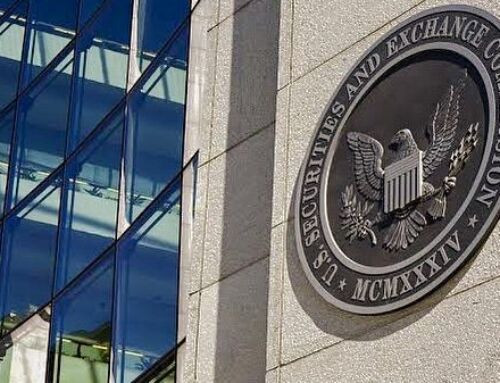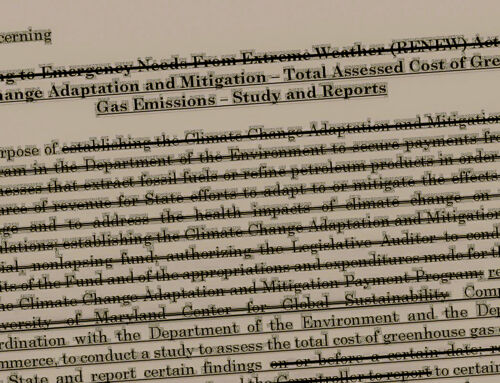View by Topic
Recent Articles
-
EPA Will Keep Current Limits for “Forever Chemicals” in Drinking WaterSaturday, May 24th, 2025
-
Court Indefinitely Pauses SEC Climate Rule LitigationSaturday, May 17th, 2025
-
Maryland is About to Regulate Mold But is the Cart Before the HorseSaturday, May 10th, 2025
-
New Environmental Laws from the 2025 Maryland Legislative SessionSaturday, April 26th, 2025
View by Month/Year
“Green Building Law Update” Headlines
Recent Articles & News from
Stuart Kaplow’s blog
at GreenBuildingLawUpdate.com
- EPA Will Keep Current Limits for “Forever Chemicals” in Drinking Water May 25, 2025
- Court Indefinitely Pauses SEC Climate Rule Litigation May 18, 2025
- Maryland is About to Regulate Mold: But is the Cart Before the Horse? May 11, 2025
- BEPS Redux: The Most Far Reaching Environmental Legislation of the 2025 Maryland General Assembly May 4, 2025
Subscribe to the Green Building Law Update!
Stuart Kaplow brings his expertise and extensive experience to the table with his unique digital publication, "Green Building Law Update". Subscribers receive regular updates to keep them informed about important issues surrounding Environmental Law, Green Building & Real Estate Law, as well as the emerging demand for Environmental Social Governance (ESG).
Get fresh content through the lense of Stuart Kaplow's cutting-edge expertise, innovative commentary and insider perspective. Don't miss another issue! Subscribe below.

Maryland is About to Regulate Mold But is the Cart Before the Horse
In a sweeping act moving into a new regulatory space, “where no [hu]man has gone before,” aimed at addressing indoor mold, the Maryland General Assembly passed Senate Bill 856 during the just concluded 2025 legislative session.
This legislation, not yet signed by the governor, sets Maryland on a path to becoming maybe the only state in the nation to enact comprehensive mold regulation in rental properties, both residential and commercial. However, while the policy motivations may be commendable, a closer analysis reveals a fundamental tension: Maryland seeks to regulate mold without any scientifically established or legally defined standard for acceptable indoor mold exposure.
As an attorney who has over four decades advised clients in real estate and environmental matters, including claims involving mold and mildew, I offer a perspective on this new law.
What the Law Requires
Senate Bill 856, the Maryland Tenant Mold Protection Act, charges the Maryland Department of the Environment, in collaboration with the Maryland Department of Health, Department of Housing and Community Development, Department of Labor, and Department of General Services, with several new responsibilities. These include:
- Developing a centralized website with information on mold and dampness.
- Creating an informational pamphlet for tenants on mold risks and prevention, or alternatively distributing the EPA’s existing “Brief Guide to Mold, Moisture, and Your Home.”
- Mandating landlords to perform mold assessments within 15 days of written notification from a tenant or enforcement agency.
- Requiring remediation within 45 days (or within a reasonable timeframe, if not feasible sooner).
- Establishing regulatory standards by June 1, 2027, for mold assessment, mold air sampling, surface sampling, and remediation practices.
- Imposing ongoing obligations on landlords, including ensuring proper ventilation, maintaining low indoor relative humidity, and complying with all applicable building and housing codes.
The Missing Foundation: A Rational Health Based Standard
What is most striking, perhaps troubling, from a legal and regulatory perspective is this: Neither the U.S. Environmental Protection Agency nor any Maryland state agency has promulgated enforceable standards for acceptable indoor mold spore selections or concentrations.
This is not a trivial omission. The absence of a scientifically defined threshold for what constitutes “hazardous” mold makes the entire regulatory framework vulnerable to challenge. Without a rational basis grounded in objective health data or enforceable scientific criteria, enforcement actions under this law risk being more than arbitrary and capricious.
In environmental law, especially where human health and property interests intersect, clarity and predictability are of key import. There are more than 100,000 species of mold, within the larger more than 2.5 million species of fungi, most of which have not yet been scientifically characterized. And most mold is not visible to the human eye. What type of mold is dangerous, and at what concentration? How are landlords to know whether they are in compliance?
Put plainly, this statute moves forward in the absence of any guidance on what constitutes a violation, apparently leaving it to the several Maryland administrative agencies to take their best guess at the science and the law.
A Regulatory Burden Without Clear Standards
The law imposes significant duties and potential liabilities on building owners:
- They must assess and remediate mold, likely at considerable cost.
- They must provide tenants with information and maintain environmental controls (e.g., humidity) that are technically vague and difficult to enforce in buildings that do not have mechanical systems for those purposes and are operated by the tenants.
- They must do so under the looming threat of being deemed noncompliant with a future regulation that does not yet exist.
In litigation, the lack of measurable standards invites uncertainty. How does a court determine whether a landlord acted reasonably if there is no defined dangerous mold? Will remediation be required for all fungi, or only for certain species or concentrations? Is a landlord liable for tenant health issues arising from naturally occurring molds, or only those attributable to building conditions?
These ambiguities create a regulatory minefield for landlords and ultimately will frustrate the very tenants the law seeks to protect. Note, most property insurance policies exclude coverage for mold and fungi.
Impacts on Small Businesses and Local Governments
The fiscal and logistical impacts are real:
- Local governments that manage public housing units must comply with all provisions applicable to landlords, which could drive up costs considerably.
- Small landlords, many of whom operate with thin margins, may face substantial outlays for assessments, mitigation, and property upgrades.
- The bill fiscal note acknowledges that the financial burden will be “significant,” yet provides no direct funding or tax relief to soften the blow.
These costs will be passed on to residential tenants, undercutting the policy goal of safe and affordable housing, not to mention the cost to commercial real estate.
The Legal Risk of Acting Without Scientific Consensus
The Maryland Workgroup on Mold Standards and Remediation, created under Chapter 347 of 2023, recommended several best practices. But even that workgroup acknowledged that there is no universal or enforceable indoor air quality threshold for mold. The EPA, while offering guidance, similarly avoids issuing numeric standards. This reflects the broader scientific and medical uncertainty about the precise relationship between mold exposure and human health outcomes. In light of that lack of science, is Maryland’s legislative action premature?
There is a legitimate concern expressed by attorneys that this law attempts to enforce standards that do not yet exist or, worse, that cannot be reliably established due to the variability of mold species, environmental conditions, and individual health responses.
Conclusion: Good Intentions, Flawed Execution
Maryland Senate Bill 856 represents a well meaning effort to address indoor environmental hazards, a space that has long gone unregulated (.. while the State has focused its environmental efforts on the Chesapeake Bay and more recently on greenhouse gas emissions). However, many environmental attorneys have expressed that sound lawmaking demands more than good intentions, it requires a rational basis, scientific clarity, and enforceable standards.
Until Maryland or the federal government defines what constitutes unacceptable mold species and levels, regulations that mandate remediation and impose liability for ambiguous conditions will do more harm than good.
The MDE has until June 1, 2027, to finalize mold standards, including clarifying what of this law applies to commercial as well as residential rentals. This is a heavy lift where the science around fungi does not yet exist. One hopes that in the intervening time, policymakers will ensure that the regulatory framework is grounded in sound science, clear thresholds, and practical enforcement mechanisms.
_________________________
Join us for the next in our “carbon based life form” webinar series, “Maryland BEPS Update for Building Owners” on Tuesday, June 10 from 9 – 9:30 am. The webinar is complimentary, but you must register here.









